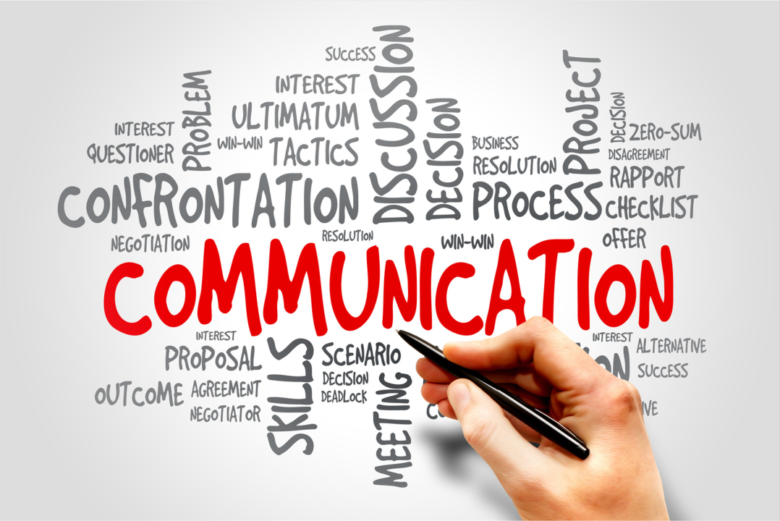One of the most important skills for a leader in our world that moves at such a fast pace is communication. You have to create relationships as well as dispatching messages. Therefore, leaders who know how to talk with people can motivate their teams, change the way things are done, and achieve amazing results. But what does it mean to have a great conversation with someone? Think of a leader who actually listens and expresses his or her thoughts clearly. For example, an individual who is conversant with his or her team members and can adapt himself/herself to various needs. Such types of leaders don’t only concentrate on what has to be done but instead make sure that others also participate.
You will gain useful knowledge about leadership communication skills that may transform your approach as we dive into the intricacies of this subject matter. Even if you run a big company or you are in charge of a small group, improving your communication techniques is the best way to become a better leader ever. Let’s start this journey together!
Good Communication – Why It Is Important for Leaders?
Good communication helps one become a good leader by establishing trust and openness among team members so that each person feels heard and valued by others. Good leaders communicate their vision effectively, which is why their followers keep following them. Moreover, collaboration becomes easy when there are good communication channels. When teams work together well they can share information freely between themselves and solve problems collectively. This synergism breeds fresh thoughtfulness resulting in increased output per unit time. To show respect towards their teammates’ ideas, some managers prefer active listening while forgetting about their judgemental attitudes towards these ideas once they have been received from other subordinates’ mouths; it boosts morale.
Similarly, effective communication eliminates misunderstandings which hinder progress at times through clear instructions that reduce confusion and result in better workflow processes when everyone understands what exactly he/she is supposed to do, unlike cases where different messages reach employees hence rendering their efforts futile. In the fast-paced information age, you must adjust your message to appeal to different groups of people. By doing this, you can engage many people and keep up their interest in different media over time.
Different Ways of Addressing People
There are a lot of differences in how we communicate with each other. Hence, to be better at guiding others, it is necessary to be aware of those disparities. Thus, some bosses have straightforward approaches. They prefer things to be clear-cut, simple, and usually short. This manner is useful when there is a necessity to make prompt decisions even under pressure. Some on the other hand may adopt expressive styles that involve storytelling and thrill as ways through which emotional bondage between leaders and their followers could be established – meaning more cooperative work arrangements but also requiring greater clarity at times. The next cluster of individuals are analytical communicators who organize everything systematically and are very detailed since they prefer numbers and facts thus leading to informative debates; although this can lead to well-thought-out choices for people it may sometimes come off as aloof or too critical towards others like-for-like arguments only directed at testing each other’s knowledge bank rather than finding solutions to any given problem identified during such discussions.
Active Listening Techniques for Managers
Good leaders need to practice active listening. You must be able to comprehend the meaning of the words you hear, not just listen to them. For example, when talking to someone, do not interrupt your conversation and maintain eye contact with the person. By doing this, you are showing that you care about what they have to say and paying attention to their conversation. Nod often as a way of showing that you are paying attention. Paraphrasing what one says can be very effective as it lets both the speaker know if they should do it or not and also allows them to understand that the listener understands everything said by him/her. Listen fully without any thought or discussion on outcomes while they still speak.
Wordless Communication: Body Language and Tone
Leaders connect with their teams in many ways through nonverbal communication including body language which can communicate a vast array of information silently such as confidence, openness, or self-consciousness among others. A leader’s tone and body language are often picked up by people around him/her. For instance, maintaining eye contact during a talk indicates interest and honesty (Smith 2015). Conversely, crossed arms may insinuate defensiveness or disinterest (Dingfelder 2017). Leaders need to decode these signs.
Tone too is very powerful; different expressions can make people feel differently about one sentence. A friendly tone makes people trust you whereas a harsh tone creates tension in the air. Leaders can make their messages more powerful by understanding how body language and voice affect people. This helps match words with physical actions to improve teamwork and foster open dialogues among employees.
Ways for Leaders to Improve Communication Skills
Being purposeful involves being deliberate in developing yourself toward becoming an excellent leader within your organization. Beginning with knowing how your team feels like. Secondly, test whether your message is clear enough. Lastly, practice having difficult conversations through role playing. It will boost your self-confidence and make you prepared for real situations.
Additionally, reading books on communication can be a good way of generating new ideas. Explore the thoughts and practices of different authors that you talk to. Another option may be to attend a workshop or seminar on how to communicate like a leader. These are places where people engage in learning by doing as well as from each other. It should be acceptable that personal narratives shared during conversations are subject to scrutiny (Argenti 2015). This helps in bringing everyone together around each other’s stories and your message, it also allows open dialogue inside one’s team.
Conclusion
Leadership has to enhance its communication skills. This means knowing people, making them trust you, and being an inspiration to take action. Every opportunity is therefore a chance to make these necessary improvements. Feedback can assist you improve on something as well as coming up with new ideas. Leadership is about clarity and simplicity of things. Through clear speech between leaders, new ideas are encouraged to grow. Remember that whatever you say matters most. Simple changes in the manner one addresses another can have major effects on a team or firm. These skills will also affect your personal life and career as you continue working on them.
FAQs
1. What’s The Most Important Part Of Good Communication For A Leader?
Being able to communicate, listen actively, show empathy, and speak flexibly with different groups or situations makes effective communication for leaders.
2. How Can I Discover How I Talk To People?
Do not be shy about asking colleagues or mentors for feedback, think about former interactions that have taken place between yourself and others who know you best like friends.
3. Why Should Leaders Practice Active Listening?
This shows that one values what someone else says so that trust is built within the team; thus it becomes easier for people to talk freely and cooperate.
4. Will Feedback Improve My Communication Skills Over Time?
Definitely! Instructive criticism allows learners to realize they possess strengths and areas where they need improvement; hence fostering growth in their communicative abilities.
5. What Other Resources Are There To Help Me Improve My Leadership Communication Skills?
Possibly giving workshops on public speaking or emotional intelligence training would be useful since these offer important competencies needed for successful leadership engagement




